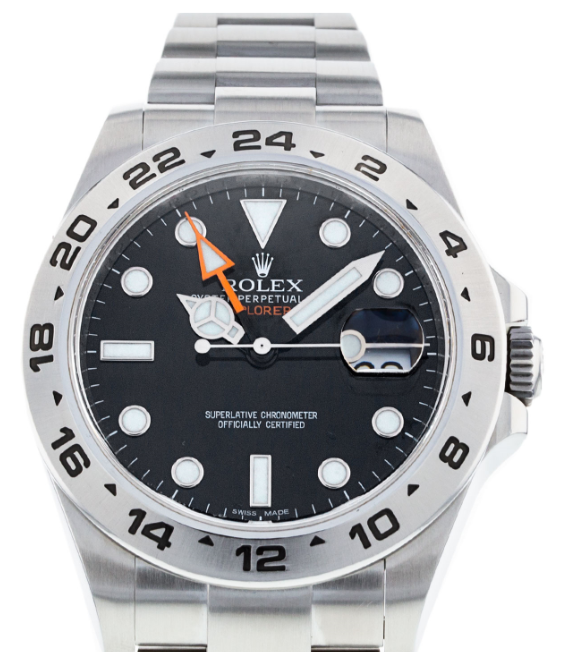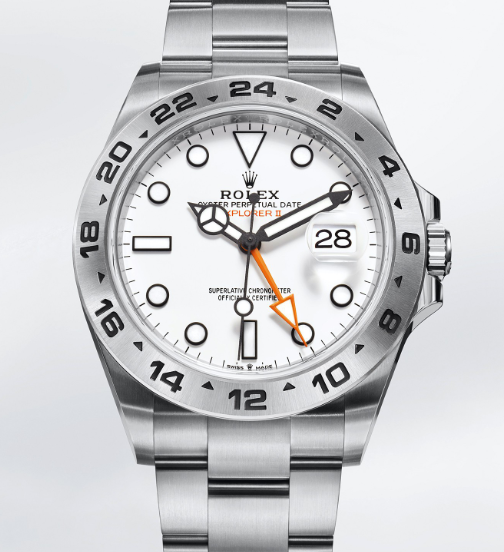Uncategorized
Blue Out of Blue – A Guide to the Rolex Explorer II Replica
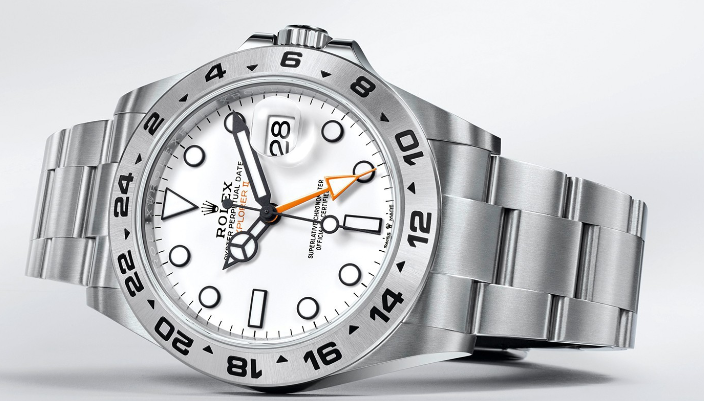
Rolex Explorer II
In 1971, Rolex introduced the Oyster Perpetual Explorer II watch, which brought a significant breakthrough. Explorer II’s conspicuous dial configuration and 24-hour hands make it the best partner for explorers and adventurers. It has become a piece of essential equipment for adventurers who venture into the polar regions often, creating a new exploration horizon for them. The Cal.1575 automatic movement inside was the movement series certified by the most observatories at that time, and its precise and durable characteristics are beyond doubt.
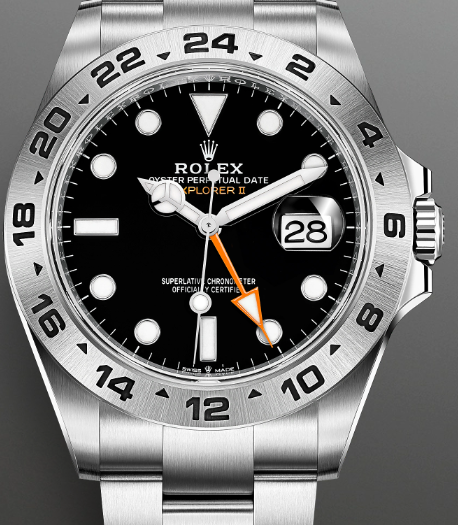
The Rolex Explorer series watch is the best partner for humankind to explore the unknown. It perfectly integrates watchmaking technology and adventure, effectively transforming thoughts into actions. This series of watches has been tested by various harsh earth environments such as the earth’s extreme ends, the world’s depths, and the flaming volcanoes.
The Explorer series watches are the best example of Rolex’s perfect integration with the external environment. This series of watches has always been one of the most popular and attractive models of Rolex, with a black and white dial, a single calendar enlarged display area at 3 o’clock, and time scales at 6 and 9 o’clock on the dial. As well as the triangular hour scale at midnight and the Arabic numerals on the 24-hour bezel together give this series of watches an elegant and sporty charm.
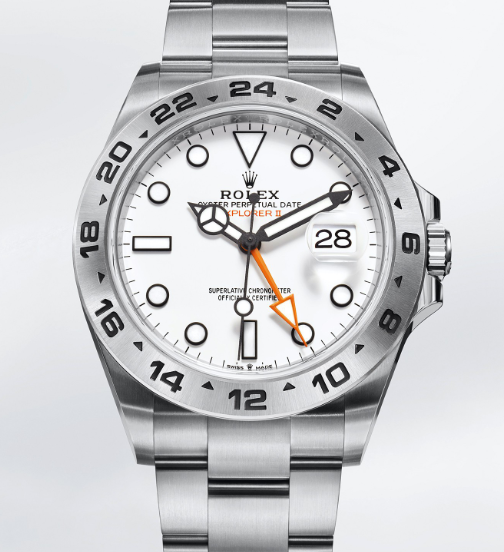
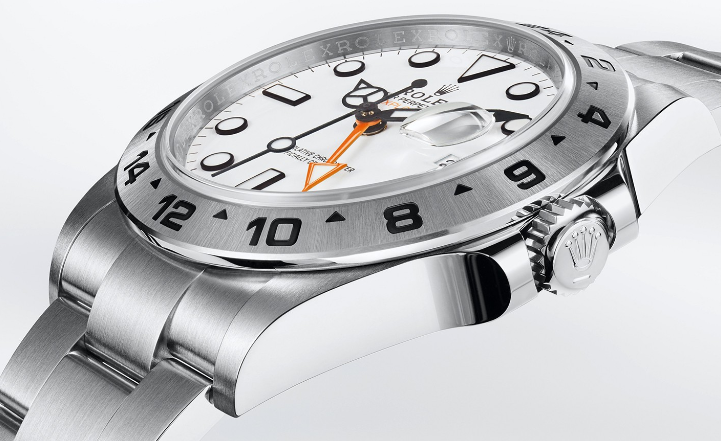
Rolex claims the Explorer II series watch is specially designed for sports adventurers. When the explorer is in the process of exploring, inevitably, they will not encounter surrounding rocks or other sharp objects, so the Explorer II series watch and the GMT Master series watch. The most significant difference between the watch is that the 24-hour printed rotatable bezel is changed to a fixed engraved 24-hour bezel, but the movement is the same as the GMT Master, Calibre 1575.
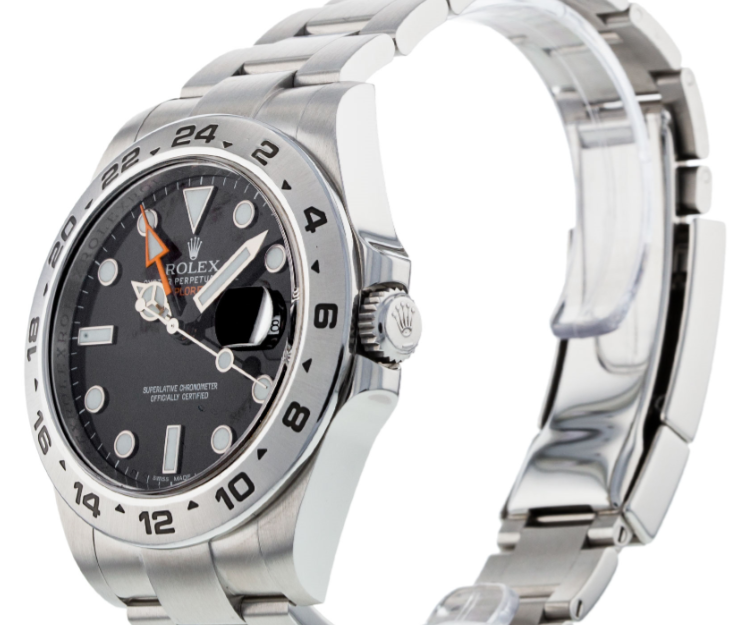
In addition to the apparent difference between the bezel and the GMT Master, the most significant difference between the Rolex Explorer II is, of course, the difference in the form of the hands. The hour hand and minute hand differ from the Benz hour hand and the solid sword-shaped minute hand of the GMT Master. The unique orange or red The 24-hour display hand, like the lightning-shaped second’s hand of the legendary Milgauss Ref. 1019, is a unique style that is not shared with other Rolex models.
The 24-hour hand on the dial of the Explorer II series returns to the orange 24-hour hand and arrow design of the classic 1971 model, while the hour and minute hands are more comprehensive than before, making it easier to read the time. The case is enlarged to 42 mm and houses the new Cal.3187 movement developed by the labor force. This movement is equipped with several of the brand’s latest patented technologies: the PARAFLEX cushioning device and the anti-magnetic blue PARA CHROME hairspring to ensure the watch’s performance. Cushioning has never been more reliable.
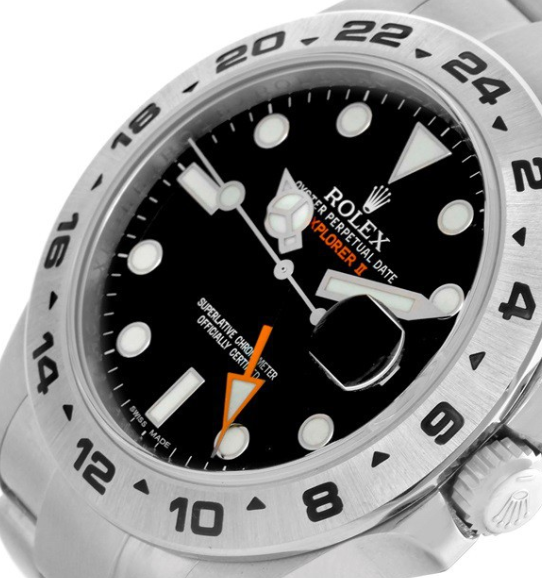
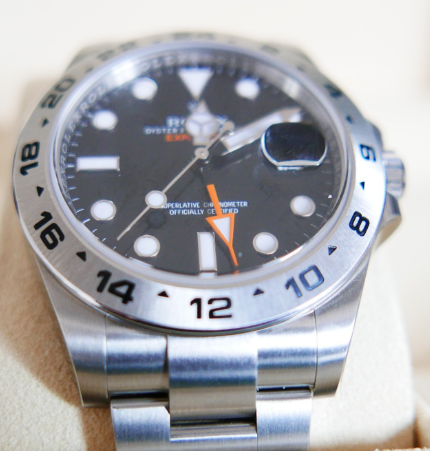
The Rolex Explorer II series watch has been a derivative of the GMT Master series since its birth. However, its popularity today is better than the blue. Of course, its performance considerations or appearance aesthetics may be better than the GMT Master series. Watch, but more importantly, the reverie-named-Explorer.
The following is a detailed introduction to this website’s Rolex Explorer II replica watch. If necessary, you can also click the link at the exact address below to buy it. This website promises 1:1 replica to provide high-quality replica watches at low prices! Our website has been in a Pioneering position in the high-end watch industry. The replica watch showcases unparalleled technical excellence dazzlingly. We are committed to inheriting history and culture. The relentless belief of our brand permeates every link and every screw. Please contact us if you need the original box, deep water resistance, or other straps.
Rolex Explorer II 216570 White 42mm
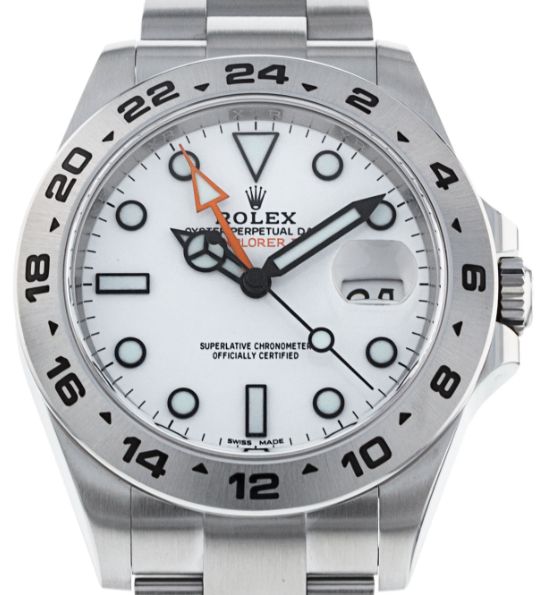
Rolex Explorer II 216570 Black 42mm
